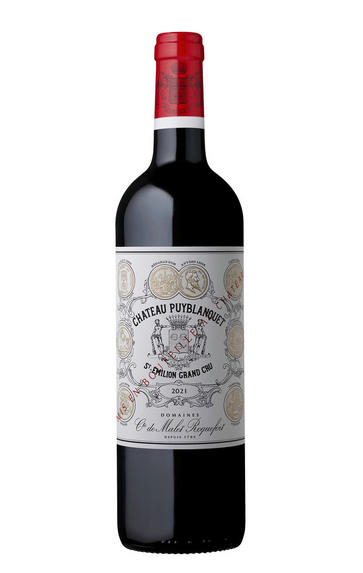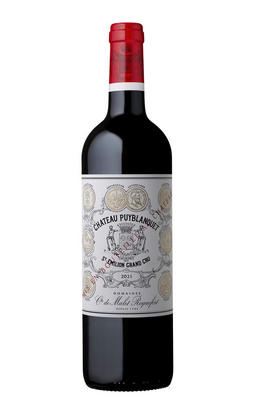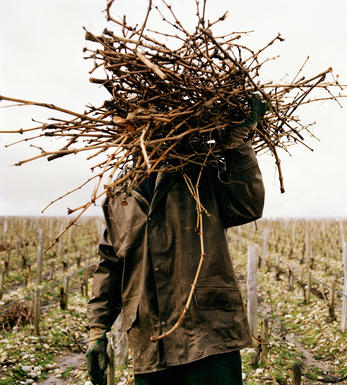
2021 Château Puyblanquet, St Emilion, Bordeaux

About this WINE

Ch. Puyblanquet
Ch. Puyblanquet returned to the Malet Roquefort family ownership in 2020, 60 years after its sale, before which it was held by their ancestors from 1819-1959. A single 19ha vineyard of limestone plateau and clay-limestone soils are planted with 80% Merlot and 20% Cabernet Franc. The grapes are vinified by parcel in stainless-steel temperature-controlled vats before their élevage in 50% new French oak barriques for 12 months.

St Émilion
St Émilion is one of Bordeaux's largest producing appellations, producing more wine than Listrac, Moulis, St Estèphe, Pauillac, St Julien and Margaux put together. St Emilion has been producing wine for longer than the Médoc but its lack of accessibility to Bordeaux's port and market-restricted exports to mainland Europe meant the region initially did not enjoy the commercial success that funded the great châteaux of the Left Bank.
St Émilion itself is the prettiest of Bordeaux's wine towns, perched on top of the steep limestone slopes upon which many of the region's finest vineyards are situated. However, more than half of the appellation's vineyards lie on the plain between the town and the Dordogne River on sandy, alluvial soils with a sprinkling of gravel.
Further diversity is added by a small, complex gravel bed to the north-east of the region on the border with Pomerol. Atypically for St Émilion, this allows Cabernet Franc and, to a lesser extent, Cabernet Sauvignon to prosper and defines the personality of the great wines such as Ch. Cheval Blanc.
In the early 1990s there was an explosion of experimentation and evolution, leading to the rise of the garagistes, producers of deeply-concentrated wines made in very small quantities and offered at high prices. The appellation is also surrounded by four satellite appellations, Montagne, Lussac, Puisseguin and St. Georges, which enjoy a family similarity but not the complexity of the best wines.
St Émilion was first officially classified in 1954, and is the most meritocratic classification system in Bordeaux, as it is regularly amended. The most recent revision of the classification was in 2012

Merlot/Cabernet Franc
Merlot and Cabernet Franc are grape varieties commonly used in Bordeaux-style blends, particularly in the Bordeaux region of France. When these two grapes are blended, they can create a wine that combines the best characteristics of each variety.
Merlot is known for its smoothness, soft tannins, and ripe fruit flavours. It often contributes black cherry, plum, and chocolate flavours to the blend. The grapes are relatively easy to grow and ripen earlier than other Bordeaux varieties, making them versatile for blending.
Cabernet Franc, on the other hand, adds structure, depth, and complexity to the blend. It typically brings aromas of red fruits such as raspberry and strawberry, along with herbal notes like bell pepper and tobacco. These grapes have thinner skins and can be more challenging to cultivate, requiring specific growing conditions to reach their full potential.
When Merlot and Cabernet Franc are combined, the result is a well-balanced wine with various flavours and aromas. The blend often exhibits a Bordeaux wine's medium to full body, along with a smooth texture and moderate tannins. The specific flavour profile can vary depending on the proportions of each grape in the blend and the terroir and winemaking techniques employed.


Buying options
Add to wishlist
Description
Merlot 75%, Cabernet Franc 25%
This very well-sited property was owned by the Malet Roquefort family of La Gaffelière until 1959; they had to sell in the downturn following the disastrous 1956 frost. But they had the opportunity to buy it back in 2020. The property sits along the limestone ridge that also houses Laroque, Pressac and Valandraud. Alexandre de Malet Roquefort could wait until well into October to complete the harvest. This nicely composed wine is fresh, with an appealing nose strongly around primary red fruits with an accent of spiced, macerated fruit. Drink 2024-2032.
Our score: 16.5/20
Berry Bros. & Rudd (Apr 2022)
wine at a glance
Delivery and quality guarantee